Adult Development and Aging Cavanaugh 7th Edition Test Bank
$38.00
Name: Adult Development and Aging
Author: Cavanaugh Blanchard-Fields
Edition: 7th
ISBN-10: 1285444914
Type: Test Bank
- Description
- Reviews (0)
Description
You will receive this product immediate after placing the order
Adult Development and Aging Cavanaugh 7th Edition Test Bank
Adult Development and Aging Cavanaugh Blanchard-Fields 7th Edition Test Bank
***THIS IS NOT THE ACTUAL BOOK. YOU ARE BUYING the Test Bank in e-version of the following book***
Name: Adult Development and Aging
Author: Cavanaugh Blanchard-Fields
Edition: 7th
ISBN-10: 1285444914
Type: Test Bank
– The test bank is what most professors use an a reference when making exams for their students, which means there’s a very high chance that you will see a very similar, if not exact the exact, question in the test!
– The file is either in .doc, .padf, excel, or zipped in the package and can easily be read on PCs and Macs.
– Delivery is INSTANT. You can download the files IMMEDIATELY once payment is done.
If you have any questions, please feel free to contact us. Our response is the fastest. All questions will always be answered in 6 hours., most of the time within 30mins
We also faced similar difficulities when we were students, and we understand how you feel.
But now, with the Adult Development and Aging Test Bank, you will be able to
* Anticipate the type of the questions that will appear in your exam.
* Reduces the hassle and stress of your student life.
* Improve your studying and also get a better grade!
* Get prepared for examination questions.
*Can save you time and help you understand the material.
This is the quality of service we are providing and we hope to be your helper.
Delivery is in the next moment. Test Bank is accurate.
Prepare to receive your Adult Development and Aging Test Bank in the next moment.
If you have any questions, or would like a receive a sample chapter before your purchase, please contact us at inquiry@testbanksafe.com
Adult Development and Aging Test Bank
Adult Development and Aging Cavanaugh Blanchard-Fields 7th Edition Test Bank ISBN: 1285444914
1. Dismissing an older person’s account of their physical aches and pains by saying “What do you expect for someone
your age?” is a form of
a. ageism. b. gerontology.
c. life-span perspective. d. age effects.
ANSWER: a
REFERENCES: Perspectives on Adult Development and Aging
LEARNING OBJECTIVES: ADaA.CAVA.15.01.01 – What is gerontology? How does ageism relate to
stereotypes in aging?
KEYWORDS: Applied
2. The cohort of individuals born between the years 1946 and 1964 are, on average,
a. the most active and healthiest generation to reach old age in history.
b. most likely to be unemployed during the retirement years.
c. more likely to experience ageism than any other cohort in history.
d. most likely to be in poor health in older age.
ANSWER: a
REFERENCES: Perspectives on Adult Development and Aging
LEARNING OBJECTIVES: ADaA.CAVA.15.01.01 – What is gerontology? How does ageism relate to
stereotypes in aging?
KEYWORDS: Conceptual
3. A manager of a department store tries to avoid hiring people over the age of 65 because he believes they cannot
handle the stress and that they take longer to learn the job than people who are younger. The belief of the manager
is known as
a. contextualism. b. socialization.
c. ageism. d. dysthmia.
ANSWER: c
REFERENCES: Perspectives on Adult Development and Aging
LEARNING OBJECTIVES: ADaA.CAVA.15.01.01 – What is gerontology? How does ageism relate to
stereotypes in aging?
KEYWORDS: Applied
4. Gerontology is
a. the same thing as ageism.
b. the study of prejudice and discrimination towards the elderly.
c. the study of aging.
d. the study of how chronic illnesses progress over time.
ANSWER: c
REFERENCES: Perspectives on Adult Development and Aging
LEARNING OBJECTIVES: ADaA.CAVA.15.01.01 – What is gerontology? How does ageism relate to
stereotypes in aging?
KEYWORDS: Conceptual
5. A key premise of the life-span perspective is that
a. biological changes are the most important.
b. events that happen in old age are more important than earlier experiences.
c. social changes are the most important.
d. aging is a lifelong process that begins at conception and ends at death.
ANSWER: d
REFERENCES: Perspectives on Adult Development and Aging
LEARNING OBJECTIVES: ADaA.CAVA.15.01.02 – What is the life-span perspective?
KEYWORDS: Conceptual
6. Multidirectionality refers to
a. development and aging involving both decline and growth.
b. the ability to change and improve abilities over time and with development.
c. the fact that each of us is affected by a variety of factors, both positive and negative.
d. our differing cultural backgrounds.
ANSWER: a
REFERENCES: Perspectives on Adult Development and Aging
LEARNING OBJECTIVES: ADaA.CAVA.15.01.02 – What is the life-span perspective?
KEYWORDS: Conceptual
7. Plasticity refers to
a. development and aging involving both decline and growth.
b. the ability to change and improve abilities over time and with development.
c. the fact that each of us is affected by a variety of factors, both positive and negative.
d. our differing cultural backgrounds.
ANSWER: b
REFERENCES: Perspectives on Adult Development and Aging
LEARNING OBJECTIVES: ADaA.CAVA.15.01.02 – What is the life-span perspective?
KEYWORDS: Conceptual
8. Understanding that development is shaped by biological, psychological, sociocultural, and life-cycle forces defines
which feature of the life-span perspective?
a. multidirectionality
b. plasticity
c. historical context
d. multiple causation
ANSWER: d
REFERENCES: Perspectives on Adult Development and Aging
LEARNING OBJECTIVES: ADaA.CAVA.15.01.02 – What is the life-span perspective?
KEYWORDS: Conceptual
9. Which of the following statements is trueregarding the population in the United States?
a. The fastest growing segment of the U.S. population is the over-85 group.
b. There are more men than women in all segments of the elderly population.
c. The baby boomers are the smallest cohort of individuals ever to reach old age.
d. By 2050, the population distribution in the United States will resemble the shape of a rectangle.
ANSWER: a
REFERENCES: Perspectives on Adult Development and Aging
LEARNING OBJECTIVES: ADaA.CAVA.15.01.03 – What are the characteristics of the older adult population?
KEYWORDS: Factual
10. Relative to the population of older European Americans, the number of older ethnic Americans is
a. decreasing.
b. increasing.
c. similar.
d. decreasing among women, while increasing among men.
ANSWER: b
REFERENCES: Perspectives on Adult Development and Aging
LEARNING OBJECTIVES: ADaA.CAVA.15.01.03 – What are the characteristics of the older adult population?
KEYWORDS: Factual
11. Population trends in the United States, specifically the continuing rise in the number of elderly people, are
a. unique and specific to the United States.
b. not unique because the population of elderly persons is increasing in most parts of the world.
c. also seen in Africa but not elsewhere in the world.
d. also seen in Europe but not elsewhere in the world.
ANSWER: b
REFERENCES: Perspectives on Adult Development and Aging
LEARNING OBJECTIVES: ADaA.CAVA.15.01.04 – How are they likely to change?
KEYWORDS: Factual
12. Menopause is an example of which force of development?
a. life-cycle forces b. psychological forces
c. biological forces d. histological forces
ANSWER: c
REFERENCES: Issues in Studying Adult Development and Aging
LEARNING OBJECTIVES: ADaA.CAVA.15.01.05 – What four main forces shape development?
KEYWORDS: Applied
13. Characteristics that make us individuals, such as one’s personality, are the result of
a. life-cycle forces. b. psychological forces.
c. biological forces. d. histological forces.
ANSWER: b
REFERENCES: Issues in Studying Adult Development and Aging
LEARNING OBJECTIVES: ADaA.CAVA.15.01.05 – What four main forces shape development?
KEYWORDS: Applied
14. Normative age-graded influences are events that
a. are unique to each person.
b. occur at a specific age for each person.
c. generally occur around the same age for most people.
d. rarely occur to any individual.
ANSWER: c
REFERENCES: Issues in Studying Adult Development and Aging
LEARNING OBJECTIVES: ADaA.CAVA.15.01.06 – What are normative age-graded influences, normative
history-graded influences, and nonnormative influences?
KEYWORDS: Conceptual
15. Which of the following is an example of a normative age-graded influence on development?
a. learning to drive a car
b. living during the Great Depression
c. winning the lottery
d. contracting AIDS
ANSWER: a
REFERENCES: Issues in Studying Adult Development and Aging
LEARNING OBJECTIVES: ADaA.CAVA.15.01.06 – What are normative age-graded influences, normative
history-graded influences, and nonnormative influences?
KEYWORDS: Applied
16. The age at which one gets married or retires from a career are
a. normative age-graded events. b. normative history-graded events.
c. normative individual-graded events. d. nonnormative events.
ANSWER: a
REFERENCES: Issues in Studying Adult Development and Aging
LEARNING OBJECTIVES: ADaA.CAVA.15.01.06 – What are normative age-graded influences, normative
history-graded influences, and nonnormative influences?
KEYWORDS: Applied
17. Normative history-graded influences are events that
a. are unique to each person.
b. occur at a specific age for each person.
c. generally occur around the same age for most people.
d. often give a generation its unique identity.
ANSWER: d
REFERENCES: Issues in Studying Adult Development and Aging
LEARNING OBJECTIVES: ADaA.CAVA.15.01.06 – What are normative age-graded influences, normative
history-graded influences, and nonnormative influences?
KEYWORDS: Conceptual
18. The “sexual revolution” in the 1960s is an example of a
a. normative age-graded event. b. normative history-graded event.
c. normative individual-graded event. d. nonnormative event.
ANSWER: b
REFERENCES: Issues in Studying Adult Development and Aging
LEARNING OBJECTIVES: ADaA.CAVA.15.01.06 – What are normative age-graded influences, normative
history-graded influences, and nonnormative influences?
KEYWORDS: Applied
19. The death of a spouse at age 25 is an example of a
a. normative age-graded event. b. normative history-graded event.
c. normative individual-graded event. d. nonnormative event.
ANSWER: d
REFERENCES: Issues in Studying Adult Development and Aging
LEARNING OBJECTIVES: ADaA.CAVA.15.01.06 – What are normative age-graded influences, normative
history-graded influences, and nonnormative influences?
KEYWORDS: Applied
20. Which of the following is a nonnormative influence on behavior?
a. when one’s first marriage occurs b. being a “baby boomer”
c. having a child d. winning the lottery
ANSWER: d
REFERENCES: Issues in Studying Adult Development and Aging
LEARNING OBJECTIVES: ADaA.CAVA.15.01.06 – What are normative age-graded influences, normative
history-graded influences, and nonnormative influences?
KEYWORDS: Applied
21. __________ is extremely important in gerontology because it shapes how people define core concepts such as
age, old age, and normative life course.
a. The age of the individual b. Ethnicity
c. Culture d. Socialization
ANSWER: c
REFERENCES: Issues in Studying Adult Development and Aging
LEARNING OBJECTIVES: ADaA.CAVA.15.01.07 – How do culture and ethnicity influence aging?
KEYWORDS: Conceptual
22. Normative age-related developmental changes, such as the slowing of one’s reaction time and the loss of family
members and friends, are considered
a. primary aging. b. secondary aging.
c. tertiary aging. d. quaternary aging.
ANSWER: a
REFERENCES: Issues in Studying Adult Development and Aging
LEARNING OBJECTIVES: ADaA.CAVA.15.01.08 – What is the meaning of age?
KEYWORDS: Factual
23. Developmental changes that are related to disease, lifestyle, and other environmental factors that are not inevitable
are termed
a. primary aging. b. secondary aging.
c. tertiary aging. d. holistic aging.
ANSWER: b
REFERENCES: Issues in Studying Adult Development and Aging
LEARNING OBJECTIVES: ADaA.CAVA.15.01.08 – What is the meaning of age?
KEYWORDS: Factual
24. Loss of memory due to Alzheimer’s disease is an example of
a. primary aging. b. secondary aging.
c. tertiary aging. d. quaternary aging.
ANSWER: b
REFERENCES: Issues in Studying Adult Development and Aging
LEARNING OBJECTIVES: ADaA.CAVA.15.01.08 – What is the meaning of age?
KEYWORDS: Conceptual
25. __________ involves a rapid loss that occurs just before death.
a. Primary aging b. Secondary aging
c. Tertiary aging d. Pathological aging
ANSWER: c
REFERENCES: Issues in Studying Adult Development and Aging
LEARNING OBJECTIVES: ADaA.CAVA.15.01.08 – What is the meaning of age?
KEYWORDS: Conceptual
26. Terminal drop, in which intellectual abilities show a marked decline in the years directly preceding death, is an
example of which type of aging?
a. primary b. secondary
c. tertiary d. biopsychosocial
ANSWER: c
REFERENCES: Issues in Studying Adult Development and Aging
LEARNING OBJECTIVES: ADaA.CAVA.15.01.08 – What is the meaning of age?
KEYWORDS: Applied
27. Denise is 51-years-old. However, learning how to ride her son’s skateboard yesterday made her feel much
younger than her 51 years. The two types of age described here are
a. sociocultural and biological. b. chronological and perceived.
c. perceived and biological. d. chronological and biological.
ANSWER: b
REFERENCES: Issues in Studying Adult Development and Aging
LEARNING OBJECTIVES: ADaA.CAVA.15.01.08 – What is the meaning of age?
KEYWORDS: Conceptual
28. Measuring the functioning of various vital or life-limiting systems, such as the cardiovascular system, is an
assessment of
a. biological age. b. chronological age.
c. sociocultural age. d. psychological age.
ANSWER: a
REFERENCES: Issues in Studying Adult Development and Aging
LEARNING OBJECTIVES: ADaA.CAVA.15.01.08 – What is the meaning of age?
KEYWORDS: Applied
29. The index of age that represents a person’s intellectual, memory, or learning ability is called
a. biological age. b. perceived age.
c. sociocultural age. d. psychological age.
ANSWER: d
REFERENCES: Issues in Studying Adult Development and Aging
LEARNING OBJECTIVES: ADaA.CAVA.15.01.08 – What is the meaning of age?
KEYWORDS: Conceptual
30. A relatively recent term that points to the complexities of understanding the concept of age is “emerging adulthood.”
Emerging adulthood can best be understood as
a. the transition from working life to retired life.
b. the period of time from late adolescence until one’s early to mid 20s.
c. the transition from early to late adolescence.
d. the period of time during which one’s children leave home resulting in an “empty nest.”
ANSWER: b
REFERENCES: Issues in Studying Adult Development and Aging
LEARNING OBJECTIVES: ADaA.CAVA.15.01.08 – What is the meaning of age?
KEYWORDS: Applied
31. How much of one’s development is influenced by heredity and how much is influenced by experience is referred to
as the
a. nature-nurture controversy.
b. continuity-discontinuity controversy.
c. stability-change controversy.
d. universal versus context-specific controversy.
ANSWER: a
REFERENCES: Issues In Studying Adult Development and Aging
LEARNING OBJECTIVES: ADaA.CAVA.15.01.09 – What are the nature-nurture, stability-change, continuitydiscontinuity, and universal versus specific controversies?
KEYWORDS: Factual
32. Some forms of Alzheimer’s disease are linked to genetics. However, whether one experiences Alzheimer’s, and
how the disease might progress, is thought to be influenced by one’s environment. This example expresses which
of the following controversies?
a. continuity-discontinuity b. stability-change
c. longitudinal-sequential d. nature-nurture
ANSWER: d
REFERENCES: Issues in Studying Adult Development and Aging
LEARNING OBJECTIVES: ADaA.CAVA.15.01.09 – What are the nature-nurture, stability-change, continuitydiscontinuity, and universal versus specific controversies?
KEYWORDS: Applied
33. If we consider whether personality in young adulthood predicts personality in late adulthood, we are concerned with
which of the following controversies or issues?
a. nature-nurture b. stability-change
c. continuity-discontinuity d. quantitative-quantitative
ANSWER: b
REFERENCES: Issues in Studying Adult Development and Aging
LEARNING OBJECTIVES: ADaA.CAVA.15.01.09 – What are the nature-nurture, stability-change, continuitydiscontinuity, and universal versus specific controversies?
KEYWORDS: Conceptual
Be the first to review “Adult Development and Aging Cavanaugh 7th Edition Test Bank”
You must be logged in to post a review.


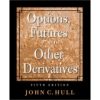
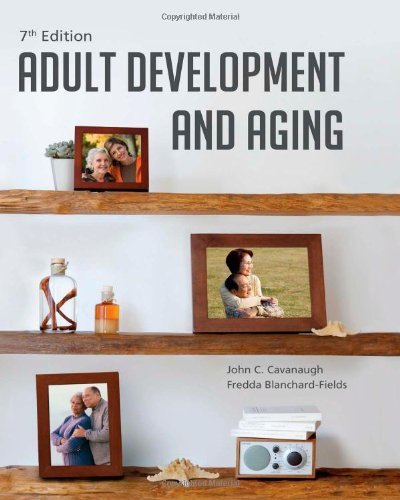
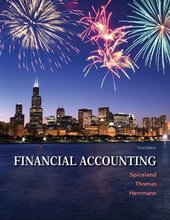
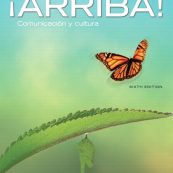

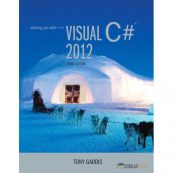
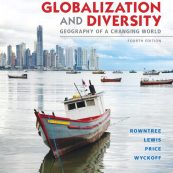


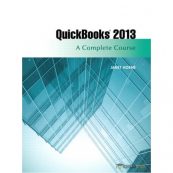

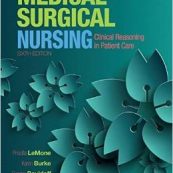
Reviews
There are no reviews yet.